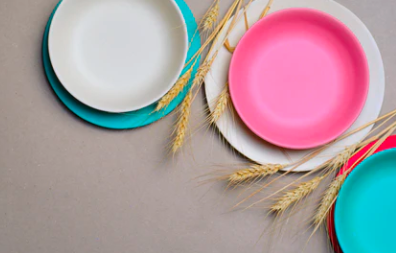Wheat Straw vs Bamboo Plates: Which Is Greener and Safer?
Introduction
As global awareness of environmental issues increases, the demand for sustainable and biodegradable products has surged. Among the most discussed alternatives to plastic tableware are wheat straw and bamboo plates — two materials that look similar on the surface but differ greatly in origin, durability, and environmental impact.
If you’re trying to decide which material is the better eco-friendly option for your home, business, or event, this article provides a clear and honest comparison of wheat straw vs bamboo plates so you can make the smartest choice for your needs — and the planet.
For a detailed product and eco-impact guide, you can also explore Wheat Straw vs Bamboo Plate insights on AnzhuCraft, a top resource for sustainable tableware.
What Are Wheat Straw Plates?
Wheat straw is the dry stalk left after harvesting wheat grains. Rather than burning this agricultural byproduct (which contributes to pollution), manufacturers now recycle it to produce lightweight, compostable plates.
Key Features:
Made from natural waste material
BPA-free and food safe
Microwave and freezer safe
Decomposes in as little as 3–6 months in compost
Wheat straw plates are commonly used for parties, takeout packaging, schools, and eco-conscious offices.
What Are Bamboo Plates?
Bamboo is a fast-growing grass that matures in 3–5 years and regenerates without replanting. It’s widely considered one of the most renewable resources on Earth. Bamboo plates are usually pressed or molded from bamboo fiber, sometimes reinforced with cornstarch or melamine.
Key Features:
Reusable and washable
Naturally stronger than most other eco plates
Elegant, wood-like finish
Biodegradable (though often at slower rates)
Bamboo plates are popular in upscale restaurants, home kitchens, and zero-waste gift sets.
Main Differences Between Wheat Straw and Bamboo Plates
| Feature | Wheat Straw Plates | Bamboo Plates |
| Source | Waste product from wheat farming | Cultivated fast-growing grass |
| Durability | Moderate – ideal for one-time use | High – reusable many times |
| Eco-Impact | Recycles waste, highly compostable | Renewable but requires harvesting |
| Reusability | Typically disposable | Often reusable up to 100 uses |
| Cost | Low-cost, budget-friendly | Higher price point |
| Look & Feel | Basic, matte finish | Smooth, elegant, premium look |
Which One Breaks Down Faster?
If composting speed is your top priority:
Wheat straw plates usually break down in 3–6 months in home compost.
Bamboo plates take 6–18 months and may require industrial composting.
So, if you’re aiming for a truly zero-waste lifestyle, wheat straw plates offer the most immediate environmental benefit.
Health and Safety: Are They Safe to Use?
Yes — when purchased from reputable suppliers.
Both materials are:
Non-toxic
BPA-free
Suitable for both hot and cold foods
Look for brands that provide safety certifications and avoid bamboo plates bonded with excessive melamine, which may leach chemicals when microwaved.
One reliable source for safe and sustainable options is anzhucraft.com, known for offering biodegradable and food-safe tableware made from bamboo, wheat straw, and paper.
When to Choose Wheat Straw Plates
Choose wheat straw plates when:
You’re hosting a large event with a tight budget
You need compostable, single-use items
You want to reduce your carbon footprint using agricultural waste
You manage a business that needs bulk, low-cost eco-packaging
When to Choose Bamboo Plates
Choose bamboo plates when:
You want reusable, elegant dinnerware
You’re focused on style and presentation (home use, events)
You want something stronger than traditional disposable plates
You’re gifting eco-products (kits, packaging sets)
Final Verdict: Which Should You Use?
If your goal is single-use, compostable, and cost-effective — go for wheat straw plates.
If you want style, reusability, and strength — choose bamboo plates.
Ultimately, both are excellent choices when compared to traditional plastic or foam options. The better one depends on how and where you plan to use them.
Conclusion
Wheat straw and bamboo plates are shaping the future of eco-friendly dining. Whether you run a catering service, plan events, or simply want a greener home, these two materials offer powerful alternatives to single-use plastic.
Still deciding? Visit AnzhuCraft to browse top-quality biodegradable products and expert comparisons to help you choose wisely.






